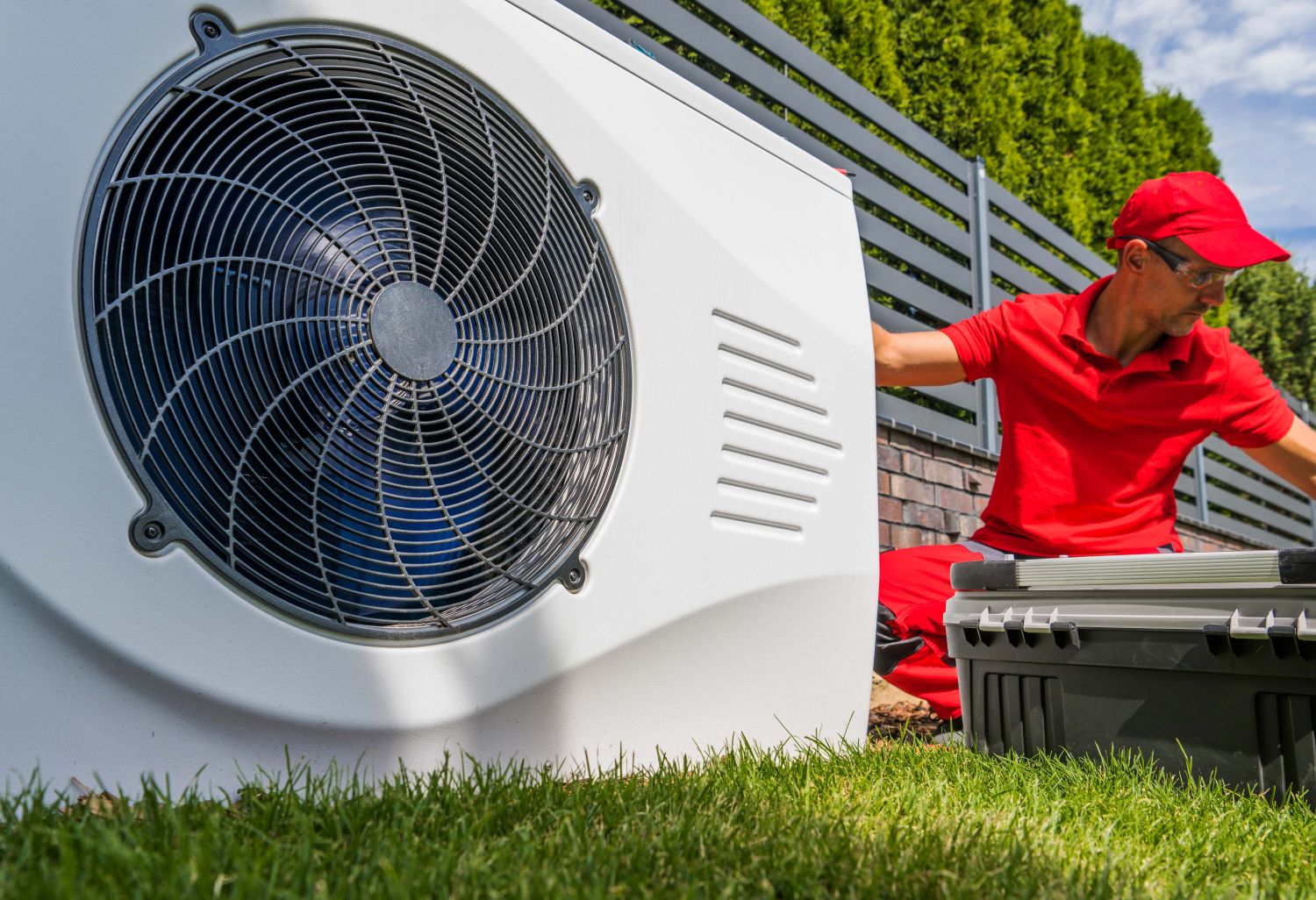The global impact of heating and cooling systems on pollution
The European Commission’s Joint Research Centre (JRC) has recently published a compelling study focussing on the significant levels of air pollution generated by heating and cooling systems. The findings highlight a critical yet often overlooked issue - the environmental cost of maintaining comfortable indoor temperatures - and the global implications of heating and cooling pollution, writes John Ridgeway.
Heating and cooling systems, in both residential and commercial spaces, are among the largest contributors to air pollution in the world. The JRC study found that these systems release significant amounts of particulate matter (PM2.5), nitrogen oxides (NOx), ammonia (NH3), non-methane volatile organic compounds (NMVOCs), carbon monoxide (CO) and sulphur dioxide (SO2).
Residential heating alone accounts for:
- 85% of PM2.5 emissions
- 82% of NMVOC emissions
- 79% of NH3 emissions
- 76% of CO emissions
Despite the growing adoption of cleaner energy technologies, the study revealed that combustion-based heating systems still dominated, producing 97% of heat in the EU in 2022. Heat pumps, a cleaner alternative, showed promising growth, but they still represented just 3.7% of gross energy consumption in that same year.
Transitioning to cleaner heating and cooling systems clearly faces several hurdles. High upfront costs are still deterring widespread adoption of technologies like heat pumps and solar heating. Inconsistent policies across regions are also hindering a cohesive push towards cleaner systems. Furthermore, limited awareness about the environmental impact of traditional systems has slowed consumer interest in sustainable alternatives.
Air pollution and public health
More, certainly needs to be done because the pollutants released by heating and cooling systems pose significant risks to public health. PM2.5, for instance, can penetrate deep into the lungs and bloodstream, causing respiratory and cardiovascular issues. Similarly, NOx and CO are linked to respiratory problems and chronic diseases.
According to the World Health Organisation (WHO), air pollution is one of the leading causes of premature deaths globally, with millions of deaths annually attributed to exposure to fine particulate matter. Heating and cooling systems, particularly those powered by fossil fuels, are a major contributor to this burden.
The environmental impact is also stark. The combustion of fossil fuels for heating and cooling contributes significantly to greenhouse gas emissions, exacerbating climate change. Furthermore, pollutants like NH3 and SO2 can lead to acid rain, harming ecosystems and biodiversity.
In North America, heating and cooling systems are similarly significant contributors to air pollution. The region’s reliance on natural gas, oil and propane for heating, coupled with coal-powered electricity for cooling, results in substantial emissions. In the United States space heating and cooling account for approximately 40% of residential energy use. In Canada, heating is the dominant energy use in residential buildings, particularly in colder provinces where natural gas is prevalent.

However north America has made some strides in adopting cleaner technologies, such as heat pumps, which are gaining in popularity, especially in temperate regions, due to incentives like tax credits and rebates. Energy-efficient devices like smart thermostats are also helping to reduce overall consumption and solar and geothermal systems are emerging as viable options for heating and cooling.
That said the initial costs of installation remains prohibitive for many households and the transition is slower in regions with extreme climates where traditional systems are deeply entrenched.
Asia and other regions
In Asia, rapid urbanisation and rising living standards have led to a surge in the use of air conditioning, contributing to significant energy consumption and emissions. For example, China is the world’s largest consumer of air conditioning units and faces severe pollution challenges from coal-powered electricity. In India, increasing demand for cooling in hot climates has exacerbated energy stress and pollution.
In Africa and South America, heating and cooling systems are less widespread, but growing urbanisation and economic development are driving demand. This provides an opportunity to leapfrog directly to cleaner technologies, avoiding the pitfalls of fossil-fuel-based systems.
By way of action, the EU has implemented stringent air quality targets for 2030, aiming to reduce pollutant emissions significantly. Policies encouraging the adoption of heat pumps and renewable energy systems are central to achieving these goals.
In the United States, the Inflation Reduction Act includes provisions to promote energy efficiency and renewable technologies. Canada’s Greener Homes Initiative offers grants for retrofitting homes with energy-efficient systems.
International efforts, such as the Kigali Amendment to the Montreal Protocol, also aim to phase down hydrofluorocarbons (HFCs) used in air conditioning and refrigeration. These efforts are crucial for mitigating climate impacts.
These efforts recognise that the real path to sustainable heating and cooling lies in innovation. Promising technologies include next-generation heat pumps, capable of operating efficiently in extreme climates. We are also likely to see new energy storage solutions, enhancing the viability of solar and wind-powered systems.
For the moment, the JRC study underscores a pressing need to address the pollution caused by heating and cooling systems. While the challenge is global, it also presents an opportunity to rethink how we heat and cool our homes and businesses. By accelerating the transition to cleaner, more efficient technologies, we can mitigate air pollution, protect public health and combat climate change.
North America, Europe and other regions have taken important first steps, but a concerted effort - spanning policy, innovation and public engagement - is essential to ensure a sustainable future. The time to act is now, for the health of our planet and future generations.
Additional Blogs

What if Building Control went fully digital?
Building control governs structural integrity, fire protection, energy efficiency, accessibility and countless other aspects of design and construction. Historically, this process has been highly...
Read moreWhere most “Smart Buildings” go wrong
Smart buildings are often presented as the ultimate in modern construction - interconnected, efficient, intuitive and driven by real-time data. They promise lower operating costs, reduced energy use,...
Read more

The future of facilities management starts at RIBA Stage 0
Facilities management has traditionally been treated as a discipline that only becomes relevant once a building is handed over. At that point, FM professionals inherit decisions made months or years...
Read more